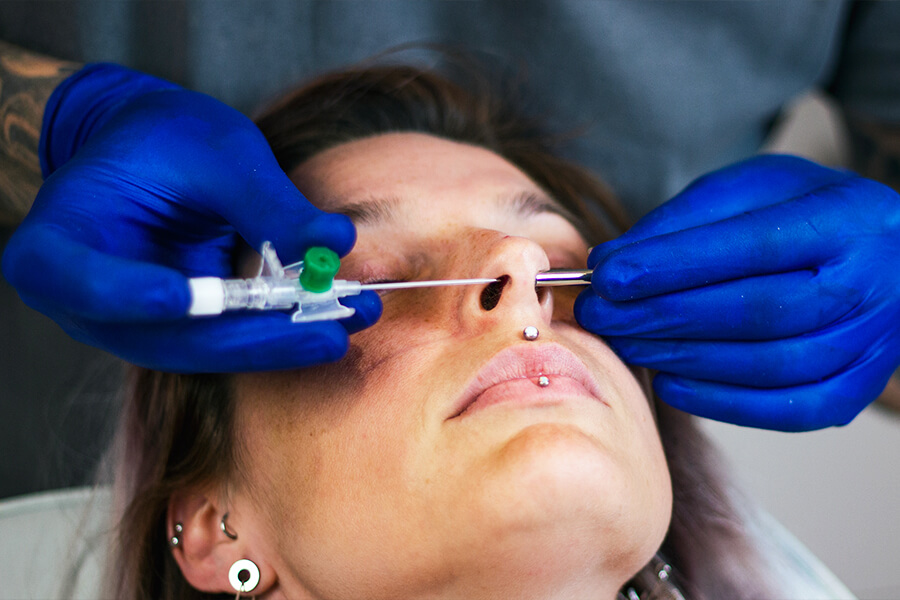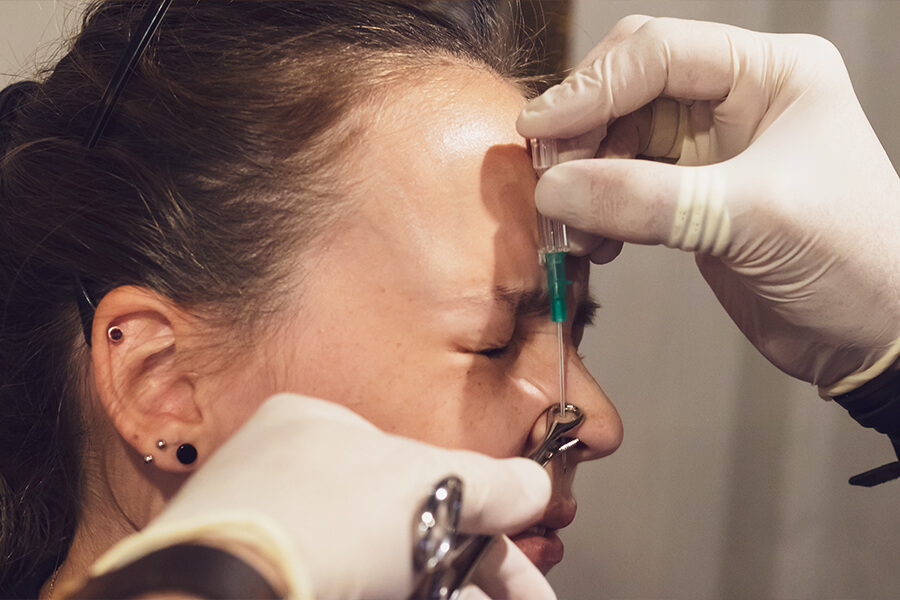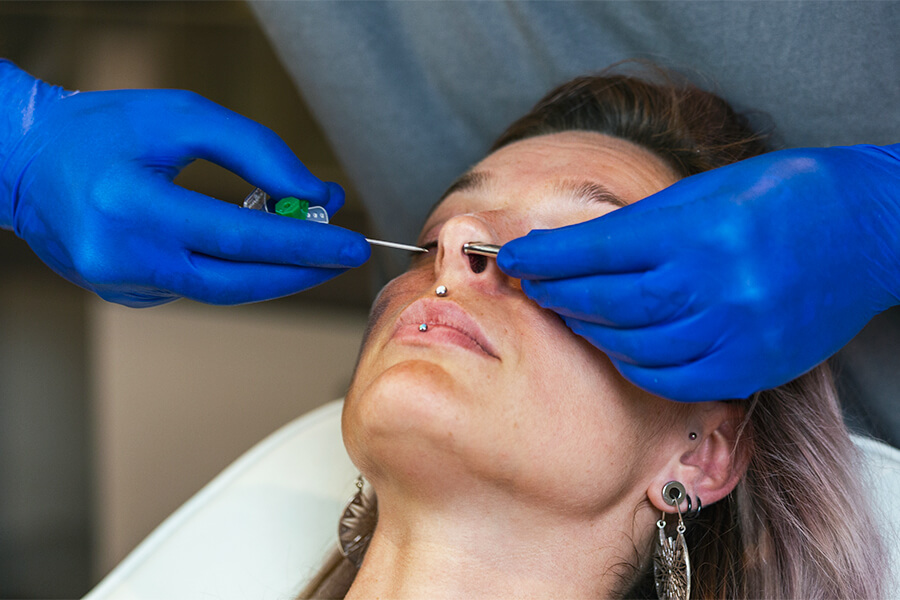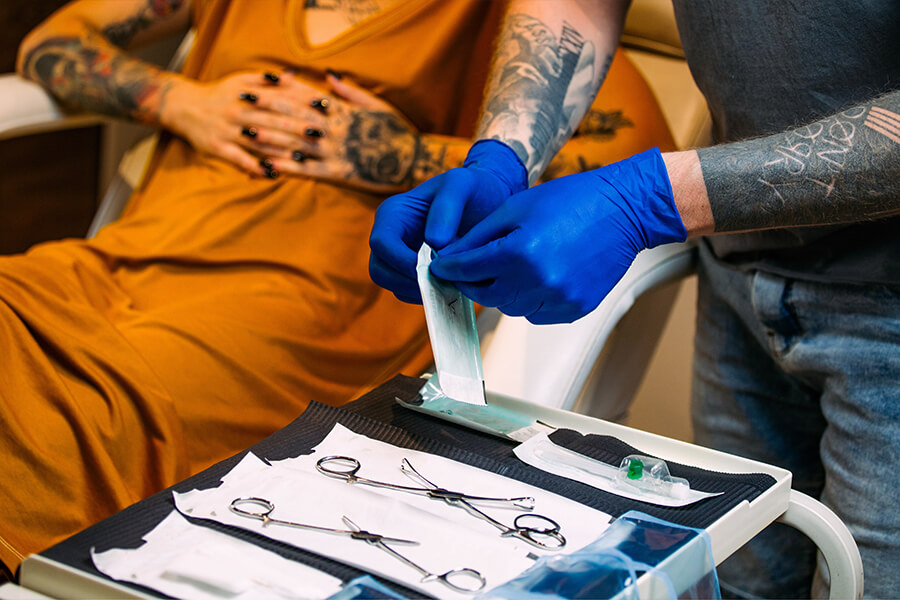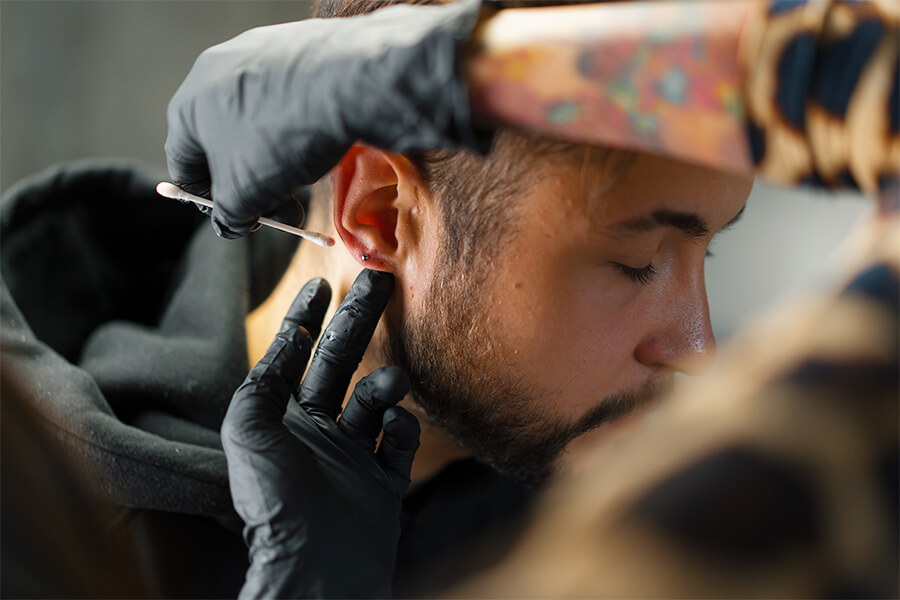Are you curious about the world of body piercing and want to learn more about the tools and techniques used by professionals? The right equipment is crucial for ensuring a safe, precise, and comfortable experience for clients.
In this article, we’ll explore the essential piercing tools and techniques that experts rely on to perform a wide range of body modifications. You’ll gain a deeper understanding of the process and know what to expect when getting your next piercing. So whether you’re a piercing enthusiast or just curious about the industry, join us as we delve into the fascinating world of piercing tools and techniques.
Key Points
- Needles are employed to create a hole for the jewelry to be inserted.
- Clamps are designed to hold the skin in place and ensure precision during the piercing process.
- Forceps are used to grasp and hold the skin steady during the piercing.
- Corks or receiving tubes are needed to catch the needle as it exits the skin, preventing damage to surrounding tissue.
- Other piercers essantial piercing tools, include as gloves, skin markers, hemostats, gauze and cotton swabs, antiseptic solutions, lubricants, aftercare products, measuring tools, jewelry pliers, and storage containers.
A Deep Dive into Piercing Tools Used by Professionals Piercer
When it comes to body piercing, professional piercers use an array of specialized tools to ensure a safe, precise, and comfortable experience for their clients. In this article, we’ll explore some of the essential piercing tools, aside from clamps, that piercers rely on to perform various body modifications.
Piercing Needles: The Primary Tool for Creating Perfect Piercings
Piercing needles are the primary instrument used to create the hole required for body jewelry. They come in a variety of gauges (sizes) to suit different piercing types. Hollow, surgical-grade stainless steel needles are the preferred choice because they create a clean hole with minimal tissue damage.
Piercing needles are available in various sizes and types to accommodate the preferences and techniques of different piercers. A popular option for many is a two-inch long needle that is suitable for most piercings. The thickness of a needle is expressed in gauge, a numerical standard of measurement used for both needles and body jewelry. Higher gauge numbers indicate thinner items. It is standard practice to use the same gauge for both the needle and jewelry in most piercings. Additionally, half gauges and curved needles are available for specific techniques and anatomical considerations.
-
Types of Piercing Needles
There are various types of piercing needles used by professionals to cater to different piercing needs and techniques. Here is a list of the most common piercing needle types:
- Hollow needle: This is the most commonly used needle for body piercing. It has a hollow center that creates a hole for the jewelry to be inserted. The sharp, beveled edge allows for a clean and precise piercing, minimizing tissue damage.
- Cannula needle: Also known as a catheter needle, the cannula needle features a thin, flexible plastic tube surrounding the needle. After piercing the skin, the needle is removed, leaving the plastic tube in place to guide the jewelry into the new piercing. This type of needle is popular in Europe and offers advantages, such as reduced tissue damage and easier jewelry insertion.
- Curved needle: Designed with a smooth arc, curved needles are used for piercings in areas where a straight needle may not conform well to the anatomy. These needles allow for more comfortable and accurate piercings in challenging areas, such as the daith or rook.
- Tapered needle: A tapered needle, also known as a taper, features a gradually increasing diameter from one end to the other. While not used for the actual piercing, tapers are employed to help guide and insert jewelry into the new piercing, especially when dealing with tight or difficult-to-reach areas. They can also be used to stretch an existing piercing to accommodate larger jewelry.
- Piercing needle blade: This type of needle is a flat, razor-like blade designed for specific piercings, such as the surface anchor or dermal piercing. The blade creates a small pocket in the skin for the jewelry’s anchor to be inserted.
- Dermal punch: Though not a needle, dermal punches are sometimes used for certain piercings, such as large gauge cartilage piercings or skin divers. A dermal punch is a circular, hollow cutting tool that removes a small piece of tissue, creating a hole for the jewelry.
| Type of Needle | Description | Common Uses | Advantages | Considerations |
|---|---|---|---|---|
| Hollow Needle | Most commonly used needle with a hollow center for creating a hole for jewelry insertion. | Used for a wide variety of body piercings, including earlobes, nostrils, eyebrows, lips, and navel. | Simple and widely used technique; precise and clean piercing with minimal tissue damage. | Not as effective for tight or hard-to-reach areas as cannula needles. |
| Cannula Needle | A needle with a thin, flexible plastic tube surrounding it for easier jewelry insertion. | Popular in Europe and used for various piercings, such as ear cartilage, nostril, and navel piercings. | Minimizes tissue damage; easier jewelry insertion in tight areas; reduces risk of contamination or infection. | Requires a more experienced piercer; not as widely used as hollow needles in some regions. |
| Curved Needle | A needle with a smooth arc, designed for piercings in areas where a straight needle doesn’t conform. | Used for piercings in challenging areas, such as the daith or rook. | Allows for more comfortable and accurate piercings in anatomically challenging areas. | Not suitable for all types of piercings; requires a skilled piercer for proper use. |
| Tapered Needle | A needle with a gradually increasing diameter, used for guiding and inserting jewelry into the new piercing. | Used to help insert jewelry in tight or difficult-to-reach areas; also used for stretching existing piercings. | Facilitates smooth jewelry insertion and reduces the risk of damaging the new piercing. | Not used for the actual piercing; primarily a tool for inserting jewelry or stretching piercings. |
| Piercing Needle Blade | A flat, razor-like blade designed for specific piercings, such as surface anchor or dermal piercing. | Used for surface anchor or dermal piercings to create a small pocket in the skin for the jewelry’s anchor. | Provides a clean and precise cut for specialized piercings. | Not suitable for most common body piercings; designed for specific piercings only. |
| DermalPunch | A circular, hollow cutting tool used to create a hole for jewelry by removing a small piece of tissue. | Used for certain piercings, such as large gauge cartilage piercings or skin divers. | Creates a clean and precise hole with minimal tissue damage; suitable for large gauge piercings. | Not a needle; not suitable for many common piercings; should be used by experienced piercers. |
Clamps and Forceps: Essential Piercing Tools for Stability and Precision
Piercing clamps and forceps are medical grasping tools used by piercers to hold and support the tissue during the piercing process. They come in various shapes, sizes, and styles, with some being better suited for specific body areas or piercings.
-
Pennington forceps
Pennington forceps, with their distinct triangular jaw clamp, are widely used for body piercings. For tongue piercings, larger oval-headed forceps are often the tool of choice. In the hands of a skilled technician, forceps shouldn’t cause pain or excessive tissue trauma. The piercer meticulously positions the forceps on the tissue, making sure the placement marks are evenly aligned on both sides.
The forceps provide stability, enabling the piercer to accurately insert the needle and create the desired piercing. A proficient piercer will attach and remove the forceps swiftly while maintaining their security throughout the process. Excessive manipulation of the forceps once attached can cause unnecessary pain and damage, so minimizing movement while clamped is crucial.
In certain instances, such as with tongue and labret or lip piercings, forceps may remain in place until after inserting the jewelry. The forceps’ head should be large enough to accommodate the barbell or labret stud ends, allowing for easy removal without getting stuck to the jewelry.
-
Slotted Forceps
Slotted forceps are a unique and innovative type of clamp designed to address the challenges of piercing tight or difficult-to-reach areas. These forceps feature a segment of the jaws removed or cut out, allowing for easy removal once the jewelry has been inserted, without needing to open the jaws or maneuver them over the barbell ends. This feature is particularly beneficial when working with piercings that have limited space, such as certain ear cartilage piercings, or when using jewelry with larger or hard-to-navigate ends.
Besides providing a more comfortable experience for the client, slotted forceps offer an alternative to traditional forceps with the added benefit of easy removal, reducing the pressure or discomfort associated with clamp removal. However, it is important to note that these forceps might have a higher risk of slipping off if the client moves unexpectedly during the piercing process.
While traditional metal forceps can be reused after thorough decontamination and sterilization, disposable plastic clamps have emerged as a more recent innovation explicitly designed for piercings. Regardless of the type of forceps used, it is essential for piercers to be familiar with the various clamp options and their specific advantages and considerations to ensure a safe, comfortable, and successful piercing experience for their clients.
-
Oval-headed forceps
Oval-headed forceps are a specialized type of clamp designed specifically for tongue piercings. These forceps feature a larger, oval-shaped head, which offers several advantages during the piercing process.
The broader head of the oval-headed forceps provides better support and stability when handling the tongue, a muscle that can be quite strong and mobile. By ensuring a secure grip on the tissue, the piercer can maintain better control and precision during the piercing. This is particularly important for tongue piercings, as inaccurate placement can lead to complications such as damage to teeth, gums, or the salivary glands.
In addition, the oval-shaped head of these forceps can help to minimize discomfort during the procedure. The larger surface area distributes pressure more evenly across the tissue, reducing the pinching sensation that clients may experience with other types of clamps. This can make the piercing process more comfortable and less intimidating for clients.
| Type of Forceps | Description | Advantages | Considerations |
|---|---|---|---|
| Pennington Forceps | Triangular-jaw clamp forceps commonly used for body piercings. | Provides good support and stability for many piercings; widely used. | Not suitable for all types of piercings. |
| Oval-Headed Forceps | Larger forceps often used for tongue piercings. | Designed to accommodate larger jewelry, such as barbells. | Not suitable for smaller or more delicate piercings. |
| Slotted Forceps | Forceps with a segment of the jaws removed, allowing for easy removal after jewelry insertion. | Eliminates the need to open the forceps or fit them over the barbell ends. | Higher risk of sliding off if the client moves suddenly during the piercing process. |
| Disposable Plastic Clamps | Single-use plastic clamps designed specifically for piercings. | Eliminates the need for sterilization; reduces the risk of cross-contamination. | Potentially less durable than metal forceps; may not be suitable for all piercing situations. |
Corks and Needle Receiving Tubes: Supporting Tools in Piercing
In addition to the various types of piercing needles, piercers also use piercing tools like corks and needle receiving tubes to ensure a safe and accurate piercing experience, while also allowing piercers to access tight or sensitive areas more easily.
-
Corks
Corks are small, sterile items placed on the exit side of the tissue to provide support during the piercing process and to receive the needle. They help prevent accidental punctures to the surrounding tissue and are especially useful in sensitive or tight areas.
-
Needle receiving tubes
Needle receiving tubes (NRTs) provide a valuable solution in situations where clamps or corks don’t fit or aren’t suitable. These small, cylindrical tools are designed to support the tissue on the exit side during the piercing process, significantly reducing the risk of accidentally puncturing nearby tissue. NRTs come in various designs, with some featuring flared ends and others incorporating angled shapes to better adapt to the contours of the body. By offering a reliable support system for the tissue during the piercing procedure, NRTs ensure a safe and accurate outcome in those hard-to-reach or challenging areas.
Receiving tubes can be made from metal, shatter-resistant glass, or disposable hard plastic and come in various diameters and lengths. They are particularly useful for piercings in sensitive or tight areas, such as the lip or nose, where traditional forceps might not be suitable. Needle receiving tubes are frequently employed for septum piercings, as well as specific ear cartilage piercings like the rook and daith. Some piercers even utilize larger versions for nostril piercings.
Insertion Tapers: Facilitating Jewelry Insertion and Stretching
Insertion tapers, commonly known as tapers, are elongated, cone-shaped tools that assist in guiding body jewelry into fresh piercings and stretching piercings to accommodate thicker gauges. Although they may resemble needles, tapers are distinct in that they are not sharp, though they can be slightly pointy in thinner sizes, and they are solid rather than hollow like piercing needles.
The back end of a taper is designed to match specific jewelry styles, such as concave, convex, or threaded. Using the appropriate taper is crucial for a successful jewelry transfer into a piercing. Tapers are available in every standard jewelry gauge, with the thinner tip typically two gauge sizes smaller than the larger end, providing a smooth gradation over its two-inch length. While implant-grade stainless steel is a common material for tapers, they can also be found in acrylic and other materials.
Tapers are particularly helpful when inserting jewelry into hard-to-reach piercings or changing jewelry in healed piercings. They may also be used occasionally during the piercing process for inserting certain jewelry styles. For example, when a piercing is made in one direction but the jewelry needs to be inserted from the opposite side to correctly position a gem, a taper can be helpful. Lubricated tapers can push out the piercing needle and assist in transferring the jewelry into the piercing, ensuring the ornament is positioned accurately.
Besides their role in the initial piercing process, insertion tapers are useful for changing jewelry or stretching piercings. When a piercing requires stretching to fit a larger gauge, a taper can be gradually inserted, expanding the hole in a controlled manner. This enables a smoother and safer stretching experience, reducing the risk of tearing or damaging the tissue.
Sterilization Equipment: Ensuring a Clean and Safe Piercing Environment
The importance of sterilization equipment in the piercing industry cannot be overstated, as it maintains a clean and safe environment for both clients and piercers. These piercing tools help ensure that piercing instruments are free from bacteria, viruses, and other contaminants. Some common sterilization tools include:
-
Autoclaves
Autoclaves are the most widely used sterilization devices in the piercing industry. They utilize high-pressure steam to sterilize piercing tools, killing bacteria, spores, and other microorganisms that may be present on the instruments. Autoclaves come in various sizes and models, and it is crucial for piercers to follow the manufacturer’s guidelines for proper use and maintenance of the autoclave to ensure effective sterilization.
-
Ultrasonic cleaners
Before placing tools in an autoclave for sterilization, it is essential to remove any debris or contaminants from their surfaces. Ultrasonic cleaners use high-frequency sound waves to create microscopic bubbles in a cleaning solution, which effectively removes dirt, debris, and contaminants from tools. The cleaned tools can then be placed in an autoclave for sterilization. Ultrasonic cleaners are an essential step in the cleaning process, as they help ensure that instruments are thoroughly cleaned before being sterilized, maximizing the effectiveness of the autoclave.
-
Cold sterilization solutions
In some cases, when heat-sensitive piercing tools cannot be sterilized in an autoclave, cold sterilization solutions may be used as an alternative. These solutions are chemical disinfectants that can effectively kill microorganisms on the tools when used according to the manufacturer’s guidelines. However, it’s important to note that cold sterilization may not be as effective as autoclave sterilization in killing all types of microorganisms, and it is generally considered a less preferred method.
-
Sterilization pouches
These are specialized pouches or bags designed to hold piercing tools during the sterilization process. They are usually heat-sealed and feature a color-changing indicator strip to show that the tools inside have been exposed to the proper sterilization conditions. Sterilization pouches ensure that the tools remain sterile until they are opened and used for the piercing procedure.
Other Essential Piercing Tools: Gloves, Skin Markers, and Hemostats
Apart from the primary piercing tools such as needles, forceps, and sterilization equipment, professional piercers use various other tools to ensure a safe, hygienic, and precise piercing experience for their clients. Some of these additional tools include:
-
Gloves
Disposable gloves are an essential part of any piercer’s toolkit, as they protect both the client and the piercer from cross-contamination. Piercers should always wear a fresh pair of gloves for each client, and it is recommended to use medical-grade, powder-free, latex or nitrile gloves to minimize the risk of allergic reactions.
-
Skin markers
Before performing a piercing, the piercer needs to mark the exact location where the needle will be inserted. Skin markers, also known as surgical markers, are specifically designed for this purpose. These markers have a sterile, non-toxic ink that is safe for use on the skin and can be easily wiped off after the procedure.
-
Hemostats
Hemostats, also known as locking forceps, are multifunctional piercing tools that can be used by piercers for a variety of purposes. They may be used to hold jewelry during the insertion process, clamp off blood vessels to minimize bleeding, or even to grip and handle tools and materials in a sterile environment. Hemostats are similar to regular forceps but have a locking mechanism that allows them to hold objects securely without the need for constant pressure from the user’s hand.
-
Gauze and cotton swabs
These are essential materials for cleaning the piercing site before, during, and after the procedure. Gauze can be used to apply pressure to the area to control bleeding, while cotton swabs are helpful for cleaning the area with antiseptic solutions and removing any debris or blood.
-
Antiseptic solutions
Piercers use antiseptic solutions to clean and disinfect the skin before performing a piercing. Common antiseptics include alcohol, iodine, and chlorhexidine. These solutions help minimize the risk of infection and promote the healing process.
-
Lubricants
Lubricants are used to ease the insertion of needles and jewelry during the piercing process. They reduce friction and minimize tissue damage. Piercers should use water-based, sterile lubricants that are specifically designed for body piercing.
-
Aftercare products
Aftercare is a crucial aspect of the healing process for any piercing. Piercers often provide aftercare products, such as
-
Measuring tools
Accurate measurements are essential for selecting the appropriate jewelry size and to ensure proper placement of the piercing. Piercers use piercing tools such as calipers, rulers, and gauges to measure the thickness of the tissue being pierced and the size of the jewelry.
-
Jewelry pliers
Pliers designed specifically for body jewelry are used by piercers to open and close various types of jewelry, such as captive bead rings or segment rings. These pliers are made of high-quality materials and have specialized tips to avoid scratching or damaging the jewelry.
-
Storage containers and organizers
Keeping a clean, organized workspace is essential for maintaining a sterile environment and ensuring that all piercing tools and materials are easily accessible. Piercers use storage containers and organizers to keep their tools and supplies in order, making it easier to find and use the necessary items during a piercing procedure.
| Piercing Tool | Description |
|---|---|
| Piercing Needles | Essential for creating holes in the body for jewelry insertion; available in various gauges and crafted from surgical-grade stainless steel. |
| Needle Receiving Tubes | Small, cylindrical tools made of surgical-grade stainless steel or glass; designed to support the skin on the other side of the piercing, minimizing accidental punctures; especially helpful for sensitive or tight areas like lips or noses. |
| Jewelry Insertion Tapers | Cone-shaped tools that assist in guiding body jewelry into newly pierced holes; particularly useful for hard-to-reach piercings or changing jewelry in healed piercings. |
| Hemostats | Locking, scissor-like tools for holding jewelry, needles, or other equipment during the piercing process; available in various sizes and either straight or curved designs. |
| Skin Markers | Non-toxic, surgical-grade markers used for drawing a dot on the skin to mark the exact spot for needle insertion; essential for ensuring accurate and well-positioned piercings. |
| Sterilization Equipment | Necessary for maintaining a hygienic and safe piercing environment. Common equipment includes autoclaves, which use high-pressure steam to sterilize piercing tools, and ultrasonic cleaners, which remove debris and contaminants from tools before sterilization. |
| Piercing Guns | Generally not recommended due to tissue damage risks; commonly found in mall kiosks or jewelry stores; relies on a spring-loaded mechanism to force stud earrings through earlobes. |

